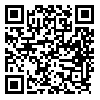Download citation:
BibTeX | RIS | EndNote | Medlars | ProCite | Reference Manager | RefWorks
Send citation to:



BibTeX | RIS | EndNote | Medlars | ProCite | Reference Manager | RefWorks
Send citation to:
Jahanbakhsh M, Ahmadi S, Saghaeiannejad-Isfahani S, Najimi A. E-learning in Medical Sciences: A survey of Students' Views on e-learning. Iranian Journal of Medical Education 2021; 21 :418-425
URL: http://ijme.mui.ac.ir/article-1-5014-en.html
URL: http://ijme.mui.ac.ir/article-1-5014-en.html
Assistant Professor, Department of Health Information Management, Health Information Technology Research Center, Isfahan University of Medical Sciences, Isfahan, Iran. , jahanbakhsh.him@gmail.com
Abstract: (2476 Views)
Introduction: Parallel with the development of information and communication technology, a new approach to learning has emerged, namely. Administering e-learning at Isfahan University of Medical Sciences as one of the objectives of the strategic plan of the educational assistantship requires extensive study for the presence of students in the e-learning contexts. This study endeavored to examine the readiness of students at Isfahan University of Medical Sciences in relation to e-learning.
Methods: This descriptive cross-sectional study was conducted in the academic year 2018; 412 students were selected from the 6079 students of Isfahan University of Medical Sciences using Cochran formula. Data was gathered through a researcher-made questionnaire as available sampling. The validity of the questionnaire was confirmed by the professors of the Department of Health Information Management and Technology. The reliability of the questionnaire was computed through Cronbach's alpha coefficient r= 0.93. To analyze the data, descriptive and inferential statistics (Pearson correlation) were used.
Results: Results revealed that most of the e-learning factors had significant differences among the different levels (P≤0.05). Students' experiences of participation in e-learning were important factor; however, time management was the least important factor. Information and communication technology skills factors had the highest positive correlation with learning ability (r=0.623), learning habits with learning ability (r=0.654), and motivation with e-learning usefulness (r=0.660).
Conclusion: This study can be used as a guideline for Isfahan University of Medical Sciences to invest in time management and incentives for low-level e-learning before implementing the courses electronically and to address the barriers and administer e-learning.
Methods: This descriptive cross-sectional study was conducted in the academic year 2018; 412 students were selected from the 6079 students of Isfahan University of Medical Sciences using Cochran formula. Data was gathered through a researcher-made questionnaire as available sampling. The validity of the questionnaire was confirmed by the professors of the Department of Health Information Management and Technology. The reliability of the questionnaire was computed through Cronbach's alpha coefficient r= 0.93. To analyze the data, descriptive and inferential statistics (Pearson correlation) were used.
Results: Results revealed that most of the e-learning factors had significant differences among the different levels (P≤0.05). Students' experiences of participation in e-learning were important factor; however, time management was the least important factor. Information and communication technology skills factors had the highest positive correlation with learning ability (r=0.623), learning habits with learning ability (r=0.654), and motivation with e-learning usefulness (r=0.660).
Conclusion: This study can be used as a guideline for Isfahan University of Medical Sciences to invest in time management and incentives for low-level e-learning before implementing the courses electronically and to address the barriers and administer e-learning.
Type of Study: Original research article |
Subject:
E-learning
Received: 2019/12/29 | Accepted: 2021/09/11 | Published: 2021/04/4 | ePublished: 2021/04/4
Received: 2019/12/29 | Accepted: 2021/09/11 | Published: 2021/04/4 | ePublished: 2021/04/4
Send email to the article author
| Rights and permissions | |
 |
This work is licensed under a Creative Commons Attribution-NonCommercial 4.0 International License. |





